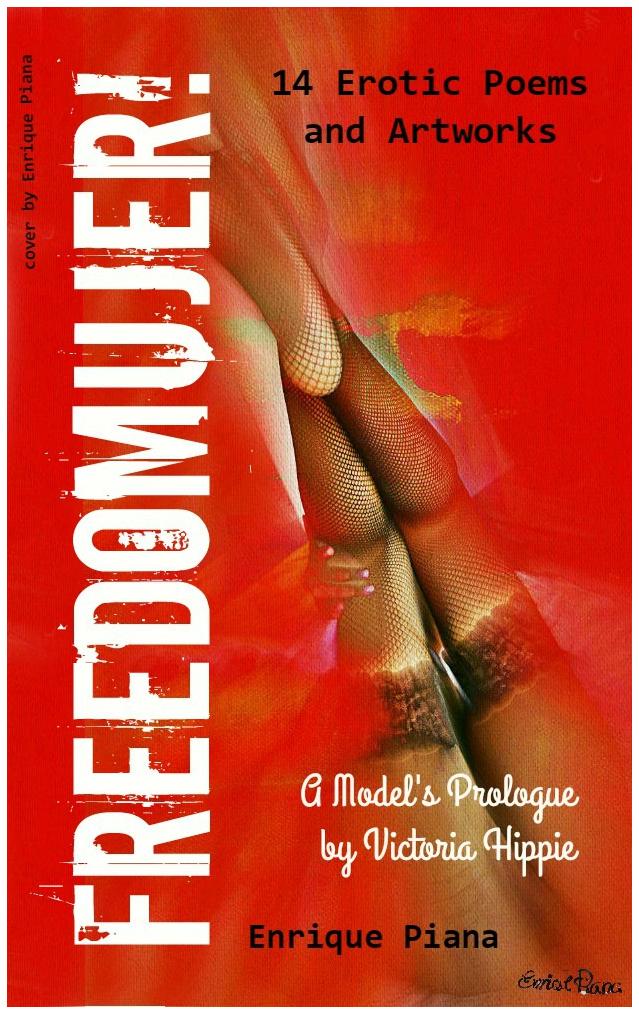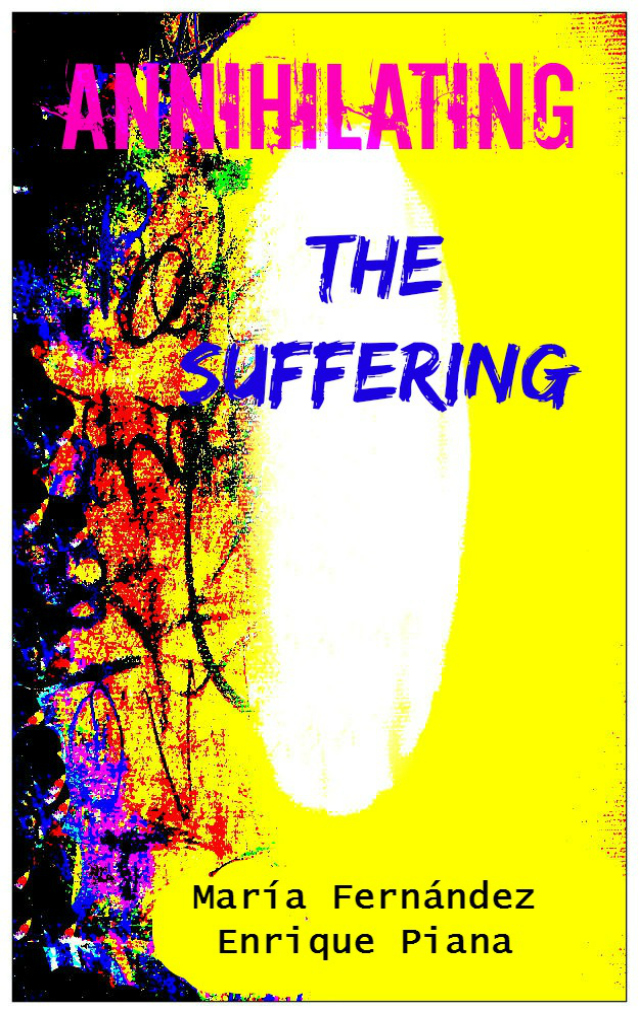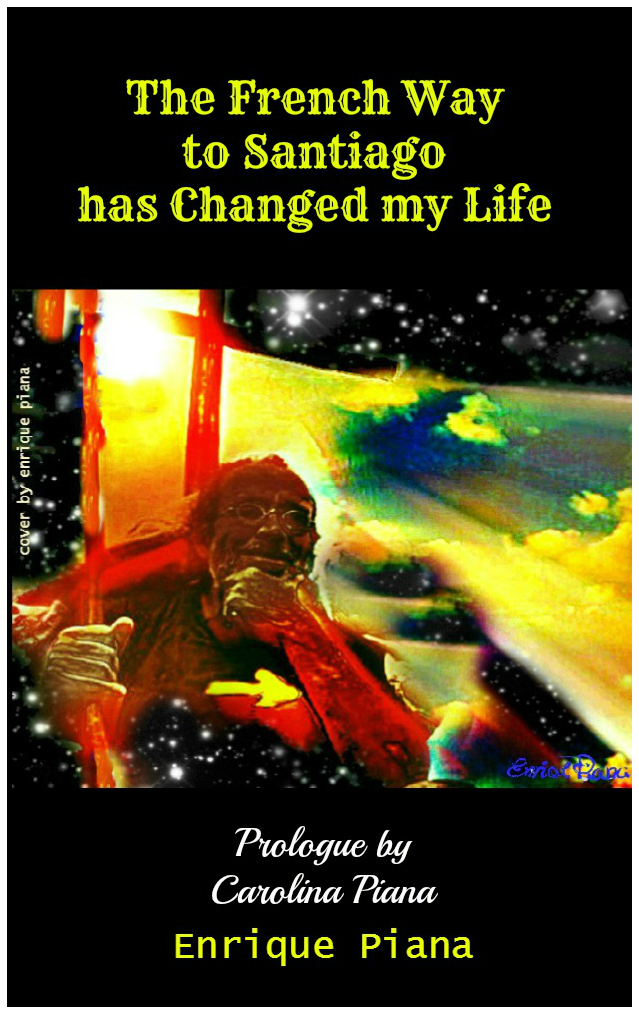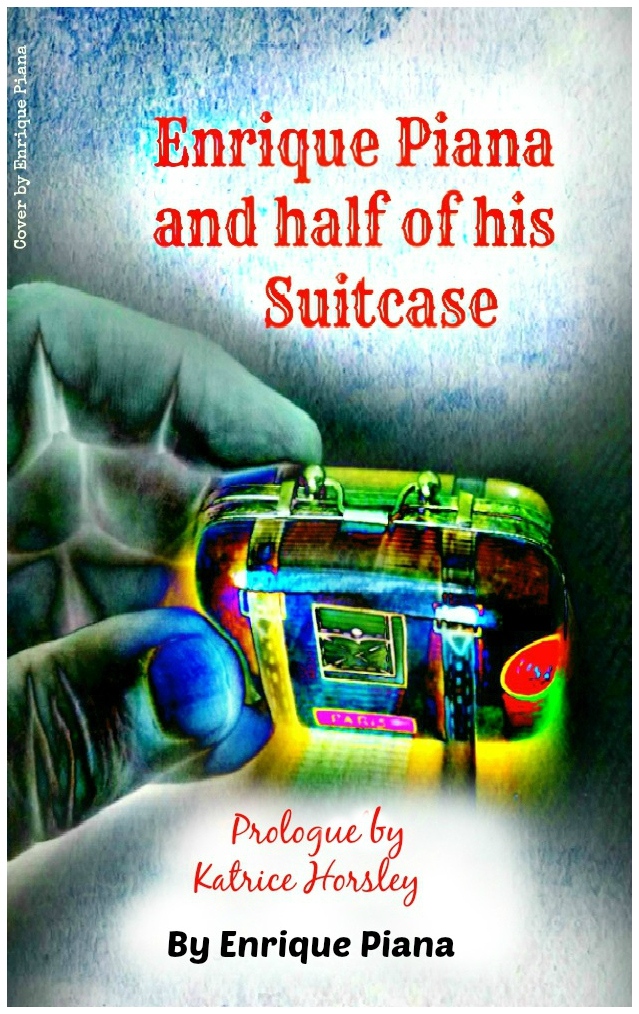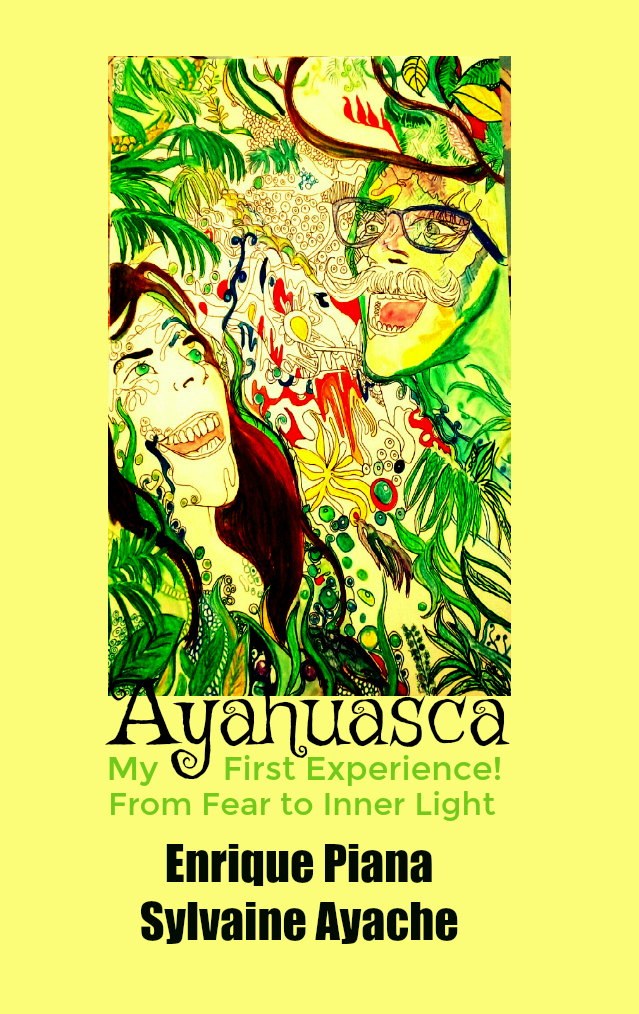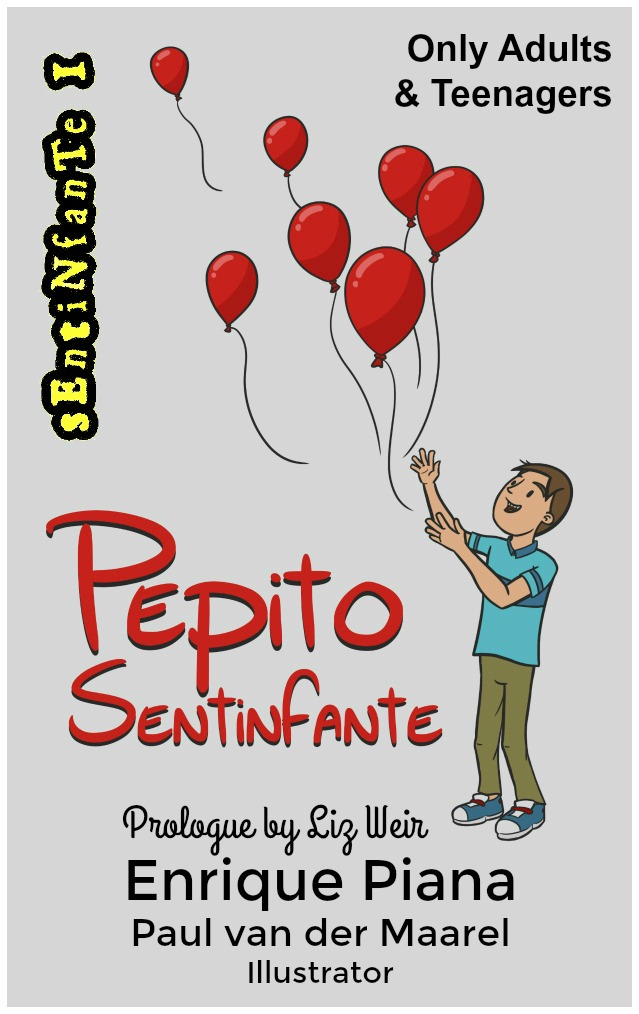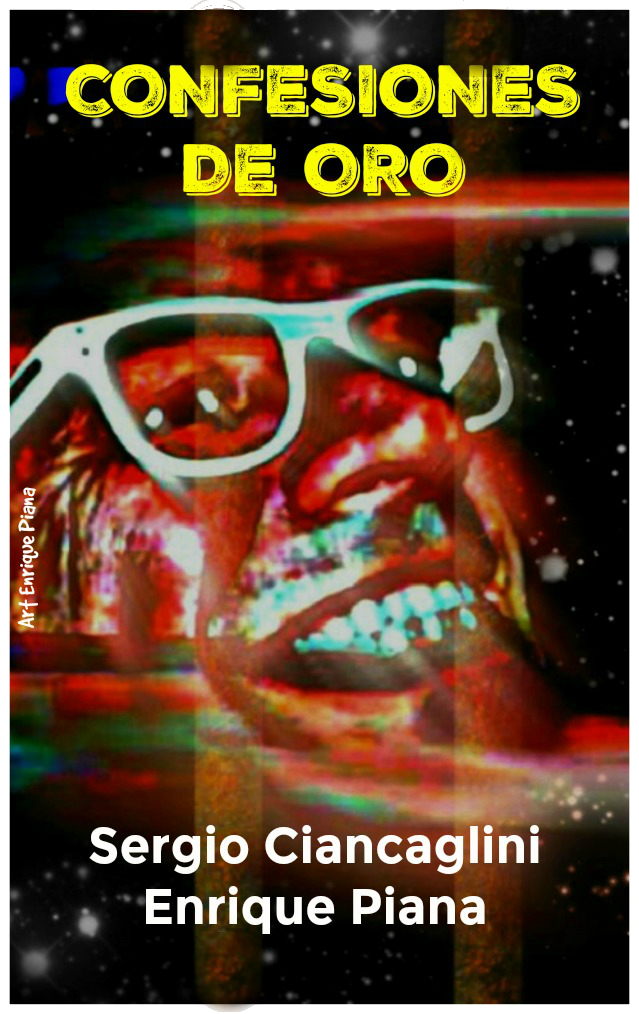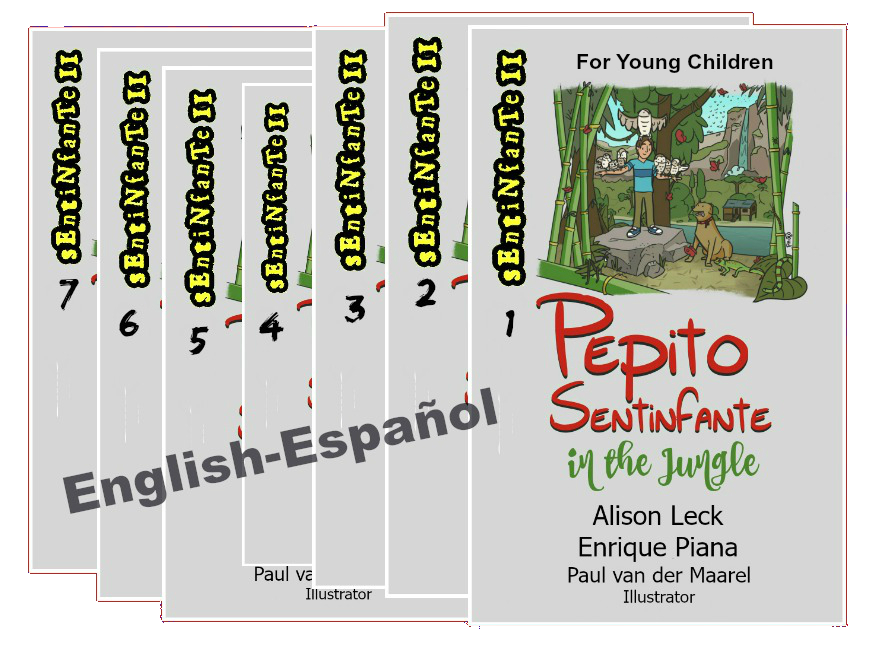
Short description of Sentinfante Series
SENTIFANTE is an artistic series of books, music, theatre, and films. Under the general direction of the Argentine writer, Enrique Piana and the Dutch illustrator Paul der van Maarel, will reach different audiences, adults, adolescents and children.
Creatives from around the world, filmmakers, narrators, musicians, cartoon designers, are responsible for the different artistic releases. Colourful, creative illustrations, which make you smile, aim to unveil the childhood emotions in all of us.
I. 2017 will launch SENTINFANTE I, a book written by Enrique Piana and illustrated by the young Dutch artist Paul van der Maarel.
II. Early in 2018, SENTINFANTE II will be launched. A collection of 7 books for young children by the writers Enrique Piana and Alison Leck, with illustrations by Paul van der Maarel.
III. In July 2018, SENTINFANTE III will be released. A short film for adults and adolescents, full of humor depicting transformation from child to adult. The filmmaker is the young French Clement Esso, under the direction of Enrique Piana.


Synopsis of the book – Pepito Sentinfante
1. A MESSAGE TO EVERYONE'S CONSCIENCE
Pepito asks all the time: Where is the Freedom Family on this planet Earth?…
This book called Pepito Sentinfante is a poetic and spiritual story with beautiful illustrations by the young 21-year old Dutch artist, Paúl van der Maarel.
The book begins with a casual encounter by the adult writer Enrique, who is instantly captivated by the magic of a 7-year old boy, Pepito, who transmits huge joy to everybody around him. It is as though adult people dance, sing and laugh out loud when they come near Pepito. Of course, the children of the town burst with joy, when they are around him, and under his direction they perform synchronized acrobatic jumps and sing in choirs with heavenly voices. From the moment of the first meeting, the writer becomes a storyteller who describes all the adventures of a real journey, which as time goes by, is becoming magical. Four friends of the boy, the group of adolescents, join the amazing adventures with an explosive end in the City of Love: Paris.
Deceptively having the appearance of being a children’s book, this novel contains a deep censure to the present society, addressing the tremendous crisis that exists relating to poor children, and refugee children, both of which the main character Pepito, loves and considers to be his peers.
In spite of being so small, Pepito considers it is the basic right of children to grow in Freedom. He questions the present education system, loaded with conditionings and limits where children are often not listened to by their parents and their educators. If education continues like this, the whole of humanity will end up destroying themselves! The teller says, repeating some of Pepito’s words.
The writer Enrique, by Pepito’s side, tells of his own transformation under this boy’s influence, in state of pureness and illumination. The novel shows that the most radical change is possible from the deep inner way anchored in the heart. Other philosophical subjects are also discussed, such as love, compassion, friendship and death.
The writer Enrique, translates and explains Pepito’s spiritual messages, and readers will be captivated with illustrations that are beautiful, descriptive and amusing. Teenagers, will identify with powerful messages from four magical 14-year old characters; a teacher of Brazilian samba, the artist who creates paintings in the air, an Irish fairy godmother and the vertical warrior. The author communicates with this adolescent segment via music, dance, active boldness in the face of adventure and the epic fight shown by the Vertical Warrior Liz.
Adults are encouraged to become aware that a unique possible revolution could be achieved, by putting love, care and attention, into the education of children. This could be a significant first step towards a solution addressing social and radical change.
As Pepito says loudly:
“if we look after and educate my little friends, poor children, in freedom,
we’ll create again a Freedom Family on planet Earth ”…
In spite of his wise, playful and loving way of feeling life, Pepito Sentinfante experiences great anger with grown-up people that he calls: Egodults. According to the boy, all of them have become the most selfish expression of all the Creation. And of course, as he understands it, they are the ones responsible for making poor children invisible and they are completely without joy, spontaneity, kindness and astonishment. According to the boy, Egodults only think of earning more and more money, from a tenacious concentration of power that is taking humanity to hunger, poverty, racism and wars. Worse, they are also responsible for neglecting the environment, actively contributing to the quick and ferocious destruction of the planet.
Pepito Sentinfante continues asking as he travels from one place to another:
“Where is the Freedom Family on this planet Earth?…”
2. 7 IMPRESSIVE MAIN CHARACTERS OF THE BOOK
1.- Pepito (7 years old): The main character of the book. The novel is focussed on him and his quest of meeting the Freedom Family.
2.- Enrique (37 years old): The co-star, an Egodult writer that, thanks to Pepito changes his life, filling it with Peace and Joy. He is the teller, who tries to understand and explain, all Pepito’s deep mystic messages.
3.- Carminha (14 years old): A teacher of Brazilian samba who never stops dancing. When she lives in Brazil, she feeds the poor children of one of the biggest ‘favelas’ (slums) of Rio de Janeiro.
4.- Liz (14 years old): She is the Vertical or spiritual Warrior who fought against the Vikings, but she asserts that her worst enemies were, are and always will be, her inner wild beasts that are the most dangerous. Every day she is ready for the battle, self-confident and ready to fight from her heart, without thinking of any consequences. It is in her barn of her lands, Lizland, where she has a tower with 77,777 kitchens where the Irish Fairy Godmothers cook and feed millions of hungry children. The energy of the ovens comes from a nearby star, the ’Mother Star.’
5.- Paúl Tall (14 years old): He is a smart artist, who lives on mountain number 7 on Gigamut’s back. His artistic works only last 7 minutes suspended in the air and disappear forever. He is the one who explains to Enrique the mystic and deep meaning of number 7, and he is the first one to make the connection between Pepito and the Godhead.
6.- Amélie (14 years old): She is the Fairy who leads 7,777,777 Irish Fairy Godmothers which feed the same number of poor children. The houses where they sleep are in a tree which is also directly connected to the ‘Mother Star’ of Lizland. From there they recover their vital energy to be able to work, cooking with such vigour.
7.- Gigamut (7 thousand years old): Is a very important character, who introduces the novel into the pure world of fantasy. It is the 77-metres tall monster who is very good, and sails loosely through gravitational waves of the cosmos. It is Pepito’s fast transport to all the places of the Universe. It has 7 mountains on its back and there is a bridge that connects the Earth with the Paradise when getting to the highest mountain. It is invisible and immaterial for the Egodults, but Pepito magically materializes it when arriving in Paris at the end of the book.
3. END OF THE BOOK AND EPILOGUE
Our apologies! Pepito says that if you want to know the end or the epilogue of this exciting story, the reader should buy the book by donation. We’re sorry! Pepito Sentinfante is very cheeky.

Illustrations by Paul van der Maarel

Pepito Sentinfante Quotes

Pepito, a champion for children all over the world
Prologue by Liz Weir
READ THE PROLOGUE
As someone who has worked with young people for over forty years, I know just how difficult life can be for many children. The troubles they are facing are not of their own making but have usually been caused by adults, and the children find themselves powerless to change the situation.
Since I believe in magic, I often wish I could simply weave a spell or wave a magic wand to make life better, but I know it’s not that simple. For me, hope is the answer, the thought that children can be inspired to believe that a better world is possible.
And so, along comes Pepito Sentinfante, a spiritual guide sent by the Great Creator to help the youth of the world, a real champion for children. Pepito empathises with their pain and celebrates their joy in an attempt to make the world we all share a much better place.
Writer Enrique Piana and illustrator Paul van der Maarel have combined forces to release Pepito’s enthusiasm for life upon the world. Paul’s fresh and vibrant illustrations and Enrique’s heartfelt storytelling convey an infectious message of hope.
Pepito exemplifies all the feelings and emotions that we adults often suppress. He encourages free spirits, creativity and, most of all, optimism that the world can be a much better place.
The whole idea of freedom is central to this book, the belief that each of us has the freedom to make choices , we have the power to make changes to benefit the next generation. There is still time to stop the rot, to work together for a better world.
Can you help Pepito with his mission?
Liz Weir
ABOUT LIZ WEIR
Liz Weir is a storyteller and writer from Northern Ireland. She was the first winner of the International Story Bridge Award from the National Storytelling Network, USA, which cited her “exemplary work promoting the art of storytelling”.
Liz Weir has told her stories to people of all ages on five continents. She has performed in pubs and prisons and hospital rooms.
Liz Weir has worked for people with very different cultural backgrounds – for children from Israel and Palestine, at universities in Germany and Wales, on TV between South-Africa and Canada.
Her voice can be heard on CDs like “The Wailing Of The Wind”, together with the Mavron String Quartet. Liz Weir has also written more than 20 books. For instance ‘When Dad Was Away’, which is a picture-book about a child whose father is in jail. Or ‘Tales of the Road’, a children’s book about Irish Traveller life.
Liz Weir does not only work as an artist. Advertising agencies ask her for concepts and she leads corporate training sessions, as storytelling has become more and more accepted as a marketing instrument. And for those working with Alzheimer’s patients, Liz Weir’s talks demonstrate that we can revitalize people by helping them remember and tell their stories.
NEW BOOK 2017

Dedication
As I am a seven-year old naughty boy
I got ahead of Enrique and I wrote something first:
I dedicate this small colourful book to all the
children of the world who do not have
a family that gives them kisses, hugs and red balloons,
and also to those who cannot get their bellies full of food.
And I also dedicate it to those who do not have
a good friend beside them and with such
super powers as Gigamut has.
But children, do not worry
I can lend Gigamut to you if you are sad.
And, for the hungry children,
I am going to make a big fuss,
to get a sandwich
or something to eat for you.
If it doesn’t work I am going to get so angry,
that I will cry, long and loudly and
I will be angry, very angry, and with Gigamut’s help,
we are going to throw all the Egodults
off this planet.
Well I’ve got bored of writing so much.
I already feel like climbing the tree
to dance with the wind
and play with the stars.
Ah!
I also dedicate it to Enrique
because he pretends to be a big poet man
but he is also a child.
Ahhh!
A kiss to my little friend Paúl
Who drew with lots of colours.
I wrote all this by myself
(Shhhh… Gigamut whispered me something)
Bye!
Pepito
DONATE NOW! AND GET YOUR BOOK!
NEW BOOK 2015
ENRIQUE PIANA AND HALF OF HIS SUITCASE


SYPNOSIS OF THE BOOK:
“ENRIQUE PIANA AND HALF OF HIS SUITCASE”
1. THE MAFIA OF GOLD
I was a famous international gold smuggler in the decade of the nineties. I was spied on by the CIA and by the Secret Service of my own country, Argentina. In 1997 I was arrested and subsequently passed through seven prisons in the United States and one in Argentina, losing my freedom for eight years and two months. I was described as “The Boss of the Mafia of Gold” by the media, in a well-publicized case that made the headlines of the Argentine newspapers for a long time. An account of my crime was also published in the acclaimed newspaper The New York Times in the United States. I was responsible for creating fraudulent exports of gold of more than one thousand million dollars in association with Argentine and multinational companies, for which I was arrested and put on trial in Argentina and the United States. Due to my imprisonment I suffered a devastating bankruptcy and all my companies in the United States, Argentina, Switzerland, Puerto Rico and Uruguay collapsed in 1997. At the same time on a personal level my important collection of South American Art, my personal assets and all my proprieties vanished in a second.
2. ADDICTION TO MONEY
I was born and grew up in a middle class family of Buenos Aires, and was looked after with a lot of care and with the example of two loving parents. I had everything I needed in my childhood and as a teenager I was educated at one of the best schools of Buenos Aires, going on to obtain my University degree. So… how did it come about that I became an international white-collar smuggler and thief? In this book I answer this question and describe what my illness was like as I succumbed to destructive addictions. I explain how I went from a lifestyle of uncontrolled luxury to having nothing and to being rejected by society as a whole, as well as losing the love of my own family and contact with them. I also tell how I was a slave of pleasure and desire, speaking in detail about my process of self-destruction that was the direct consequence of my compulsive addiction to money.
3. RADICAL CHANGE
In this book I describe what my journey to inner spirituality was like and how it saved me and allowed me to be released from big mistakes and shame, to be reborn, to love and to achieve a peaceful life far removed from that of the ego-ridden megalomaniac and money addict that I once was. Here I explain how I jumped from a negative preoccupation with the mind (creator of superficial and peripheral conflicts) to the deepest and radical change. I show how I achieved my current rebirth in a creative way. In a very intimate conversation with the reader, whom I invite constantly to participate, I describe my life and my changes in two well-defined spaces:
• In a Horizontal World with twenty true stories, without chronological order, I show my life before and after the change. In this linear and temporary space ruled by the mind I tell my true stories. There, where fear and money rule, I explain how the real world causes our hard inner struggle, an intense drama in a life full of confused perceptions and unrelated experiences.
• In a mystic Vertical World and focused in the heart, I express myself in twenty poems and in twenty artworks that illustrate the book. I tell how the most radical change is possible by just being reborn from the verticality and vulnerability of the heart. I describe in this space how I generated my self-forgiveness, and the most important of all: I speak of the recovery of a state of pure love achieved in harmony and communion with my children, my family, friends and my environment in general.
4. A BOOK WITH WIDE APPEAL
It is not easy to classify this book as a purely non-fiction title. Or simply as an autobiographical work, or as a book of poetry, or of art, or of self-help. “Enrique Piana and Half of His Suitcase” is a mixture of all these classifications and many more. By its nature it has direct appeal to bookshops and art galleries, and alongside my live performances of its poems and stories that I am currently doing, the book can find its place in other settings, too. Bringing the book, performances and workshops to penal institutions and to rehabilitation clinics is another interactive target, as well as to MBS (Mind Body and Spirit) festivals. Through its chapters I show myself as I was – a man who suffers, screams in pain, cries because of his shame and looks for his self-forgiveness in the midst of darkness. In contrast, I also sing and dance for joy at having undergone a subsequent radical change, showing my new ecstasy, laughing at everything from a fresh second childhood achieved by choice. The twenty true stories of my life are written in an entertaining and gripping narrative style, whilst the poetic orality of my twenty poems contains language ranging from a certain baroque beauty to a harsh cutting edge contemporary style. My mystic artwork illustrates the book and comprises of digital photographs of twenty original works on canvas painted in acrylic, with the background of the Cosmos acting as a mirror, and showing me as being a witness of myself rising above all my miseries and degradations of the past.
5. SUBJECT OF THE BOOK
The pages of this book try to deal with the most important topics of existence. That is why three chapters of this book are about love between man and woman. Another three are about my mystic and illuminating experience when making the pilgrimage along the French Way to Santiago de Compostela in 2014, and the incredible characters I met on the way. There are several chapters about how I lived a life of luxury before my arrest and was later reborn by letting myself be carried away by the “River” of life. I myself die in one of my poems disclosing my emotions behind my own epitaph. I speak with God in poems about life and love that I have performed live to some very receptive audiences in Europe. In other chapters, I speak about my shame, selfishness and the egocentric irresponsibility of my former life; describe the pleasure-seeking that was at the heart of my money addiction; recount my days in one of the worst prisons in the USA and under house-arrest; speak about global poverty and apologize to the hungry children of the world; speak up for a woman’s role and rights; reveal my experience with sex and Tantra; comment on political crisis and international violence; explain my own methods of meditation and my search for Truth. I tell how I got the love of my family back, and how I play with my children like a child even nowadays. Many other topics in “Enrique Piana and Half of His Suitcase” reveal me as a man who has totally recreated himself in body and soul under the light of a mystic number that is magically present in all the poems: 7.
6. TWO FAMOUS ARTISTS’ OPINIONS
Katrice Horsley, National Storyteller Laureate for Great Britain in 2012, wrote at the end of her Prologue that introduces this book:
“I have been humbled by my knowledge of Kike, I witness his courage, strength, playfulness and feel my life is better for my knowledge of him. I would like to take this opportunity to thank him for being a catalyst for change, a page turner in the book of my life.”
Liz Weir, the famous international storyteller and author from Northern Ireland, who has told stories for children and adults in the five continents, wrote about the title of this book and its corresponding story, which is the first chapter:
As a storyteller I know that a tale really needs to grab the attention and engage the emotions of the listener. When I first heard Enrique’s Half Suitcase story it did both. His passionate narrative demonstrates how humanity can overcome bureaucracy, how desperation can cause us to go to great lengths to follow our dream. Here one man retains his dignity and shows his compassion in the face of provocation. A message which touches the hearts of listeners and now, thankfully, readers as well.”
7. A BOOK THAT LIGHTS UP AND GENERATES: “Espacio Media Valija” (“The Half Suitcase Space”)
Under the influence of this book a vital new space has been created. Initially this movement was about a spontaneous encounter among people who read this book as a PDF – its message attracted them and they wanted to take it into other languages and places. Later this space evolved by itself into fresh pure air, revolutionary, designed in a free and very creative world, wherein the most radical change is always possible. A lot of people are arriving at this “Espacio Media Valija” today and sharing their stories of change, some are simply participating or relaxing and listening to the others. Some of them arrive to redesign their life from a deep and very personal change.
The journey of the hero
Prologue by KATRICE HORSLEY
READ THE PROLOGUE
Some people say that to be a hero, you must also be a fool. The Hero will be told that the quest is impossible, he will be devoured by giants, seduced by sirens and indeed, if common sense prevailed the Hero would stay home and never accomplish anything. He would stay safe and never grow. He would certainly never have a story to tell.
Luckily for us, in the pages of this book we will find a story of a Hero who was brave enough to be a Fool or perhaps a Fool who was brave enough to be a Hero. The story of a man who surrendered all to follow a path and trust that it would take him where he needed to go. Enrique Piana Velland decided to narrate a new story for himself, to stop focusing on wealth and possession and ego. He narrated himself into a Wise Man through accepting his Fool, through embracing his Hero and through forgiving his young, greedy, frivolous Prince. Forgiveness can be the most fertile soil for growth.
I, more than most perhaps, am aware of our ability to narrate a new story for ourselves. I was born into a family full-fat with love and stories. A family that was poor in terms of pocket but rich in terms of love and joy. However, as a child I struggled with speech, became silent within schools and new situations, withdrew into a land of fantasy where I had some control. The story narrated to me, about me, by others, was one of a child lacking confidence, a child unlikely to succeed, born into a dysfunctional family in an area of high social deprivation. The opposite of the story that started Kike’s journey. I believed this as a truth for many, many years, however I was lucky enough to have stories that enabled me to fantasise and dream myself into other me’s, into other ways of being. Stories provided me with a range of mirrors that offered me differing reflections of myself. Perhaps, in his youth, Kike only perceived one image reflected, one of a carefree, rich boy, offering gifts to others. It was while I was living in Ghana, in my early twenties, that I started to become aware of other narratives that existed, social narratives concerning beauty, intelligence, and ways of being. I suddenly realised what was true in one country, was not necessarily true in another. This was the start of my journey to narrate myself into my potential and ability. My story can always change as long as I comprehend I am the narrator of it. It is rather wonderful that the girl who struggled with speech and confidence ended up being the National Storyteller Laureate for Great Britain, the girl with no voice to tell her story became a woman who helped people find their voices and tell their stories. It is an honour to do such work and I am constantly humbled by the stories I hear.
My story intersected with Kike’s at the point where we were both beginning major changes in our lives,(though perhaps we did not appreciate quite how momentous those changes were at the time.) It was as though we needed to witness each other in order to begin our most painful yet rewarding journeys. Perhaps we found solace in the knowledge that both of us were about to speak the unspoken words that had been causing our spirits such sickness for so long. The most toxic words are those that demand to be said, yet we swallow down for fear they may hurt others but in swallowing them, we ourselves endure a slow death.
I have been humbled by my knowledge of Kike, I witness his courage, strength, playfulness and feel my life is better for my knowledge of him. I would like to take this opportunity to thank him for being a catalyst for change, a page turner in the book of my life.
KATRICE HORSLEY
AUTHOR'S MESSAGE
A message for the one who has come to this, our meeting, and connects with me here:
(1) If you find any paragraph or beautiful image in this book that makes you happy, then let me apologize to you for having taken it away from you first. Both of us are Nothing, and with this redefinition of Being, then it follows that both of us are equivalent to all Humanity, to Life itself and also to the Universe. Consequently, it is just a coincidence and, therefore, of no real importance, that today you are the reader and I am the writer. Many thanks for being, and being with me here.
(2) If you decide to dive into the Vertical World of this book, into either a poem or an artistic image, it is necessary that you should do so feeling very vulnerable, with your more feminine part alert and with your heart well open. If for any reason you cannot feel yourself like that, I suggest to you lovingly that you should not enter this vital and vertical space and even go away from this book forever. But if you succeed in doing so, I thank you for being, and being with me here.
Enrique Piana Velland


